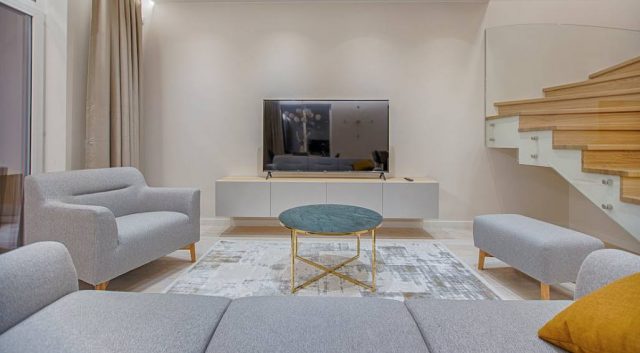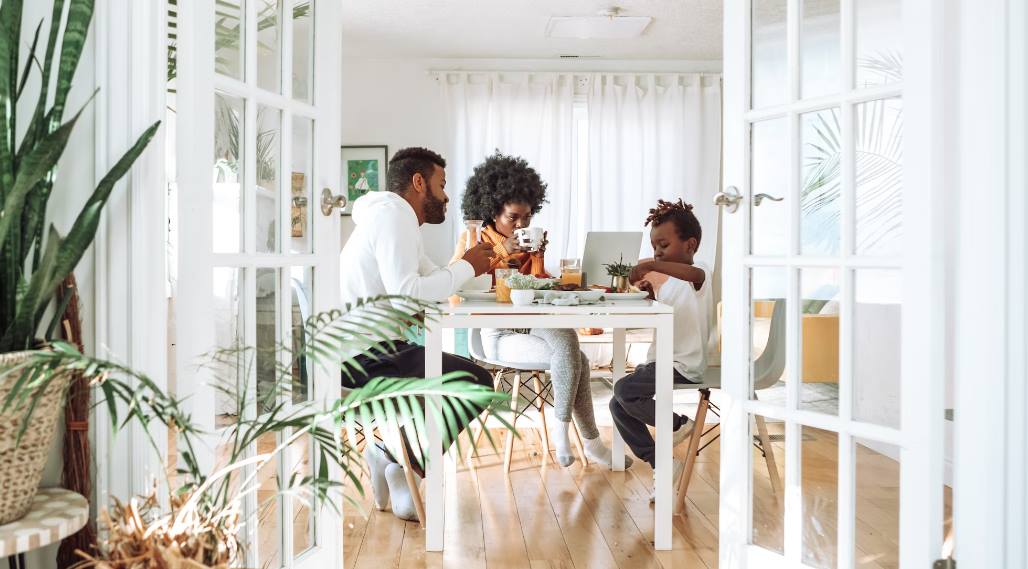Our homes are a place of refuge, relaxation, and rejuvenation. But have you ever considered how the very environment within your home can impact your mental well-being? In this article, we’ll look at the connection between our living spaces and our well-being and take actionable steps to improve your home environment.
Maintaining a clean and clutter-free environment
As you’re taking steps to create a healthy home environment, one of the fundamental pillars is maintaining a clean and clutter-free space.
The psychology behind clutter
Clutter is more than just misplaced items; it can cause stress and anxiety. The clutter in your living space can often reflect the chaos in your mind, making it challenging to find peace and relaxation. By recognizing the mental toll clutter can take, you’re already on your way to a calmer, more balanced home.
Decluttering strategies
Whether you’re drawn to the minimalist approach, need organizational systems, or prefer regular maintenance routines, these decluttering strategies will create an orderly home.
- Minimalism
Minimalism is not just an interior design trend; it’s a lifestyle philosophy with profound benefits for your well-being. Minimalism encourages the thoughtful reduction of excess possessions and distractions, allowing you to focus on what truly matters. You can create a space without unnecessary items simplifying your surroundings to promote mental clarity, reduce stress, and enhance gratitude for the things you have.
- Organizational systems
Organizational systems are the backbone of a clutter-free home. To effectively implement them, start with clear, labeled containers for storage. These make it easy to access items and return them to their designated spots. Consider open shelving to display frequently used items while keeping them accessible and visually appealing. Investing in furniture with built-in storage, like beds with under-bed drawers or ottomans that double as storage. These solutions maximize your space and help you maintain a sense of order. Remember, the key is to tailor your organizational systems to your specific needs and habits, ensuring they work with your lifestyle.
- Regular maintenance
Once you’ve decluttered and established organizational systems, regular tidying and organization checks should become a routine part of your life. Allocate a few minutes each day to put items back in their designated places and schedule periodic decluttering sessions to prevent clutter from accumlating and maintaining the peace and tranquility of your home It’s like brushing your teeth for your living space, a daily habit that ensures a healthy, clutter-free environment.
Optimize lighting
Lighting is important when it comes to establishing a healthy home environment. It directly influences your mood and overall well-being.
Natural light
Natural light great energy-saver and mood-enhancer. It can reduce stress, boost productivity, and enhance your overall sense of well-being. To maximize the benefits of natural light in your home, consider the following:
- Window placement: Arrange your furniture to make the most of the available natural light. Placing seating areas near windows is an excellent way to soak up the sunshine.
- Light-colored decor: Light-colored walls and furnishings can help bounce light around the room, making it feel brighter and more inviting.
- Curtain choices: Opt for sheer or light-colored curtains that allow light to filter through while providing privacy.
Artificial light
Artificial lighting comes in various forms, each serving a different purpose. For example, ambient lighting provides general illumination for an entire room. It sets the overall tone and brightness of the space. On the other hand, task-specific lighting, like desk lamps or under-cabinet lighting, ensures ample light for activities such as reading or cooking.
- Dimmers and smart lighting: Dimmers and smart lighting systems allow you to fine-tune the intensity of light to match your mood or activity. Lowering the lights in the evening can promote relaxation while brightening them during the day increases alertness and productivity.
- Warm vs. cool lighting: Warm, yellow-toned lighting creates a cozy, intimate atmosphere, perfect for bedrooms or living rooms. Cooler, blue-toned lighting is more refreshing and suitable for workspaces and kitchens. Consider the mood you want to create when choosing the color temperature for each room.
Using non-toxic materials and furniture
To create a healthy living space, your home must be free from harmful materials and furniture. Toxic materials can have significant health implications, but by choosing eco-friendly alternatives, you can safeguard your well-being and those of your loved ones.
The hidden dangers
Toxic building materials and furniture may emit harmful chemicals, such as volatile organic compounds (VOCs), into the indoor air. These toxic materials can be found on walls, flooring and pipes. Prolonged exposure to these substances can cause health issues, such as respiratory problems, allergies, and skin irritation. Understanding the health implications allows you to make informed decisions to protect yourself and your family.
Eco-friendly options
- Sustainable building materials: Sustainable materials are not only kind to the environment but also to your health. Materials like reclaimed wood, bamboo, and cork are durable, non-toxic, and renewable. Consider using them in construction and renovation projects to reduce carbon footprint and promote healthier indoor air quality.
- Low-VOC paints and finishes: The paint on your walls and finishes on your furniture can be sources of VOCs. Low-VOC paints and finishes are readily available and have minimal, if any, harmful emissions. They are equally effective in enhancing the aesthetics of your home while ensuring that the air you breathe is safe.
- Non-toxic furniture: When selecting furniture, explore options made from non-toxic and natural materials such as solid wood, bamboo, or metal. Be vigilant about upholstery materials and ensure they are free from harmful chemicals. Look for certifications like “Greenguard” or “FSC” (Forest Stewardship Council) to guarantee the safety of your furnishings.
In creating a calming home environment, recognize the relationship between cleanliness, optimal lighting, and non-toxic materials. A clean and clutter-free environment sets the stage for a safe space, while optimal lighting enhances the mood. The use of non-toxic building materials and furniture ensures that your surroundings are not only aesthetically pleasing but also safe for your health. These elements, when combined, result in a home that is not only visually appealing but also a source of genuine comfort and tranquility.

Speaks from heart, always too passionate and driven by emotions. Spins the words with kindness & sharpness, intriguing your ever-inscrutable minds.






